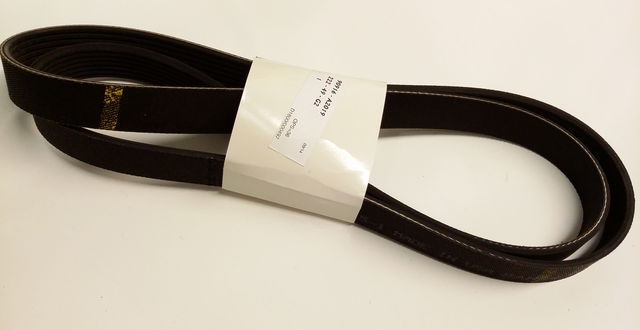Is it time to replace your Toyota's serpentine belt? You might be weighing the options between OEM and aftermarket replacements. But which one truly offers the best value? This guide will help you make an informed decision.
In this article, we'll take a closer look at what makes a good serpentine belt and compare OEM and aftermarket options. While both have their place, we'll explain why OEM belts often provide superior performance and reliability—especially for your Toyota.
### What Is an OEM Serpentine Belt?

OEM (Original Equipment Manufacturer) serpentine belts are produced by the car manufacturer or its authorized vendors. These belts are designed to match the exact specifications of the original part that came with your vehicle. For example, Toyota offers a wide range of OEM serpentine belts tailored for specific models. One such belt, part number 90915-06010, is suitable for several 2013–2019 models, including:
- Avalon
- Camry
- Highlander
- Sienna
These belts are built to last and perform under the same conditions as the original equipment.
### What Is an Aftermarket Serpentine Belt?
Aftermarket serpentine belts are made by third-party manufacturers and are not regulated by the original automaker. While some are well-made, others can vary significantly in quality, dimensions, and durability. Since these belts are not subject to the same standards as OEM parts, there’s more risk involved when choosing them.
Now, let’s break down the three most important factors to consider when selecting a serpentine belt.
### 1. The Quality of the Materials

Serpentine belts endure extreme conditions inside the engine. They operate continuously, exposing them to high heat, friction, and stress. Poor-quality materials can lead to issues like shrinking, cracking, fraying, or even breaking.
OEM belts are made with high-grade reinforced rubber that resists wear and tear. Toyota ensures that each belt is built to withstand the rigors of daily driving. On the other hand, many aftermarket belts use cheaper materials that may fail prematurely, leading to costly repairs down the line.
### 2. The Dimensions

A properly fitting serpentine belt is essential for optimal engine performance. If the belt is too tight, it can cause premature wear on the pulleys and bearings. If it's too loose, it may slip, reducing the efficiency of critical components like the alternator and water pump. A belt that's too thin or thick can also lead to failure.
OEM belts are manufactured to exact OE specifications, ensuring a perfect fit every time. Aftermarket belts, however, may not always match these precise measurements, increasing the risk of misalignment or failure.
### 3. Warranty

While serpentine belts are relatively inexpensive, a warranty can offer peace of mind. It shows that the manufacturer stands behind its product. Most OEM belts come with a warranty, while many aftermarket belts do not.
Toyota offers a 12-month, unlimited-mileage warranty on its OEM serpentine belts. If your belt fails within that period, you can get it replaced at no cost. This kind of support is rare with aftermarket brands.
### The Bottom Line
When it comes to performance, cost savings, and long-term reliability, OEM serpentine belts are the clear choice. They are built to exacting standards, fit perfectly, and come with strong warranties. While aftermarket options may seem cheaper upfront, they often lack the quality and assurance that OEM parts provide.
We offer wholesale pricing on all OEM Toyota parts, including serpentine belts. Look up your model to find the correct part number. If you need help finding the right replacement, feel free to reach out—we're here to help!
Written by Jason Lancaster
Nylon 6 Chips,Virgin Pa6 Resin,Nylon 6 Granule,Injection Grade Nylon 6 Chips
HAIYANG TECHNOLOGY CO.,LTD , https://www.hypa6.com